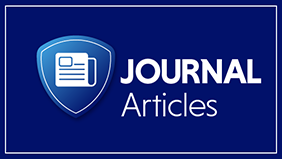
Mitigating Bias in Internal Auditing: Strategies for Enhanced Objectivity
Publication Date: September 3, 2025
By Amaya Beck
Internal auditors are tasked with evaluating organizational processes to ensure compliance with laws and regulations, as well as identifying areas for improvement. However, like all professionals, they are prone to psychological biases that can influence their judgments and decisions. These biases can lead to inaccurate audit findings, undermine the credibility of the audit process, and ultimately affect organizational decision-making. By implementing mitigation strategies, Internal Auditors can implement mitigation strategies and enhance the credibility of their work and contribute to more effective organizational governance.
Common Biases in Internal Auditing
Several biases are particularly relevant to internal auditors:
- Confirmation Bias: This involves favoring information that supports preconceived notions while disregarding contradictory evidence. It can lead auditors to overlook critical issues or misinterpret data.
- Anchoring Bias: Auditors may rely too heavily on initial information, which can skew their assessment of subsequent data.
- Overconfidence Bias: This occurs when auditors overestimate their knowledge or judgment, potentially leading to missed errors or omissions.
- Availability Bias: Auditors may give undue weight to readily available information or recent events, rather than considering a broader range of data.
Strategies for Mitigating Bias
1. Structured Decision-Making Tools: Six Thinking Hats Technique
The Six Thinking Hats technique, developed by Edward de Bono, offers a structured approach to decision-making by encouraging diverse perspectives. This method involves assigning different colored hats to represent various thinking styles: White Hat for facts, Black Hat for risks, Green Hat for creativity, Red Hat for emotions, Yellow Hat for benefits, and Blue Hat for process management. Auditors should metaphorically don the different hats and systematically consider multiple viewpoints to reduce the impact of personal biases and ensure more comprehensive evaluations.
2. Peer Reviews and Second Opinions
Engaging in peer reviews or seeking second opinions can help challenge assumptions and identify potential biases. This collaborative approach fosters a culture of critical evaluation and enhances the reliability of audit findings.
3. Training and Awareness Programs
Educating auditors about common biases and their effects is crucial. Training programs should emphasize the importance of recognizing and mitigating biases to promote a culture of objectivity within audit teams.
4. Organizational Independence and Reporting Lines
Ensuring internal auditors report directly to the audit committee or an equivalent body helps maintain independence and reduces the influence of organizational pressures that might lead to biased judgments.
Conclusion
Mitigating bias in internal auditing is essential for maintaining the integrity and credibility of audit processes. By employing structured decision-making techniques, fostering a culture of peer review, and enhancing awareness of cognitive biases, internal auditors can significantly reduce the impact of biases on their work. These strategies not only improve the quality of audit findings but also contribute to more informed organizational decision-making, ultimately enhancing governance and compliance. By adopting these strategies, internal auditors can enhance their role as guardians of organizational integrity and contribute to more effective governance and compliance practices.
⁂
Resources
- https://www.linkedin.com/pulse/psychological-biases-how-affect-internal-auditors-isaac-omosa
- https://www.accaglobal.com/content/dam/ACCA_Global/Technical/audit/pi-banishing-bias-prof-scepticism.pdf
- https://internalauditor.theiia.org/en/voices/2024/august/building-a-better-auditor-beating-behavioral-biases/
- https://abmagazine.accaglobal.com/content/abmagazine/global/articles/2022/nov/practice/the-various-biases-in-audit.html
- https://www.learnleansigma.com/guides/six-thinking-hats/
About the Author

Amaya Beck is an internal auditor at the University of Tennessee. She holds a Bachelor of Science in Business Administration (Finance) and a Master of Science in Management Information Systems, along with a Graduate Certificate in LGBTQ Health and Well-Being. As a member of the ACUA Diversity and Inclusive Leadership Committee, she collaborates on initiatives promoting equity within the profession. She presented at Audit Interactive 2025.
